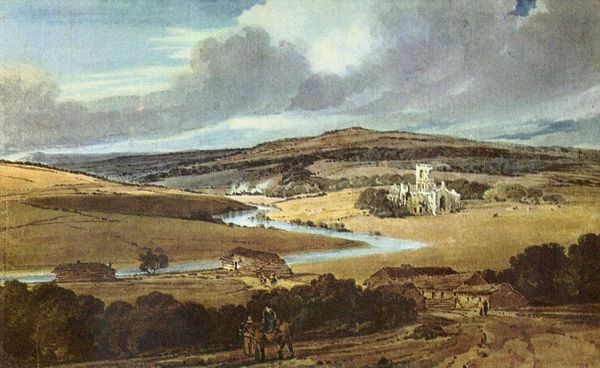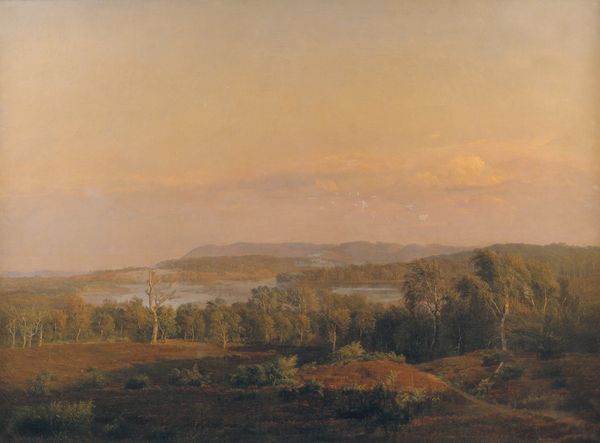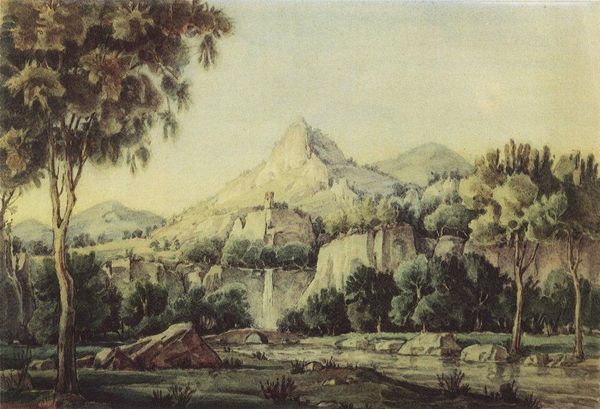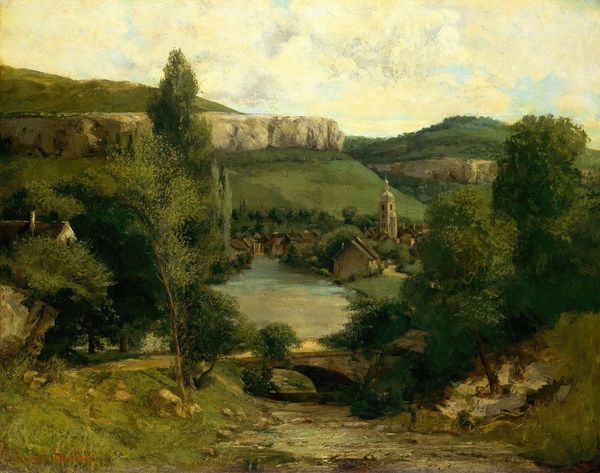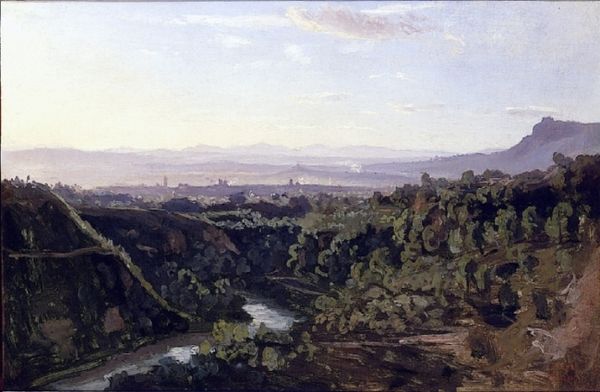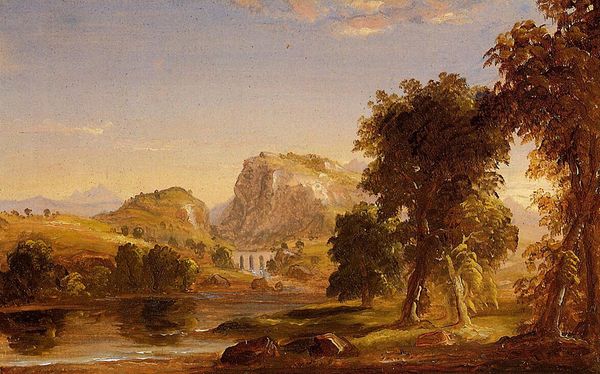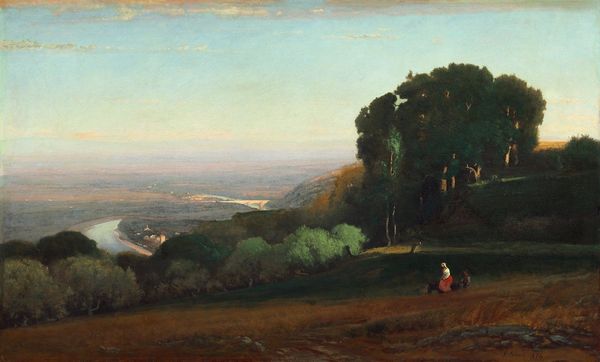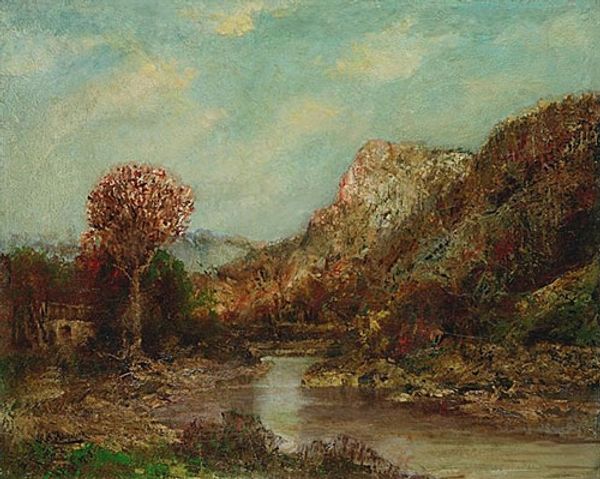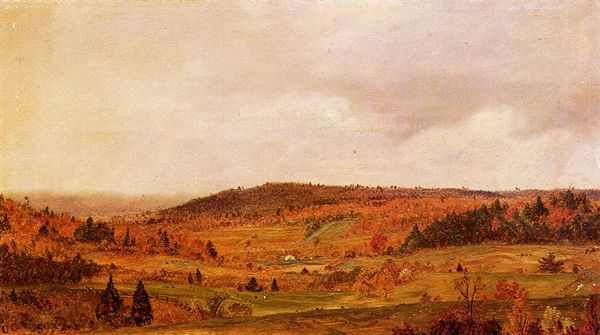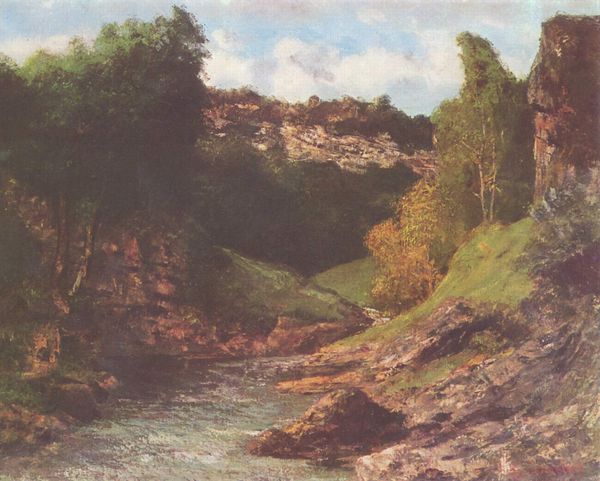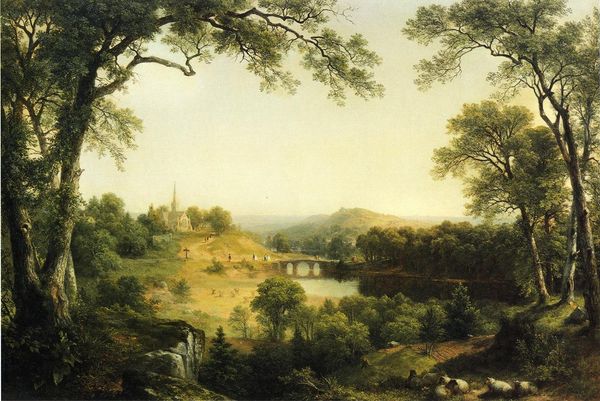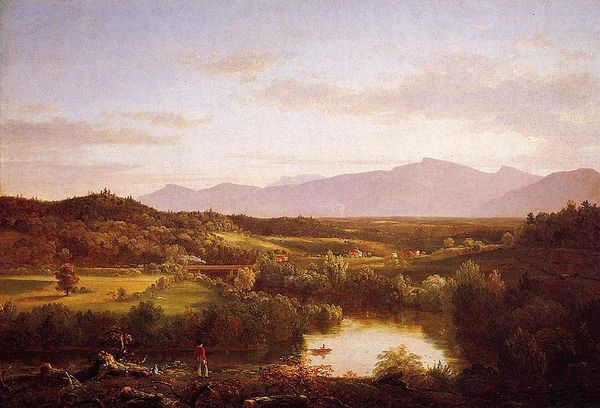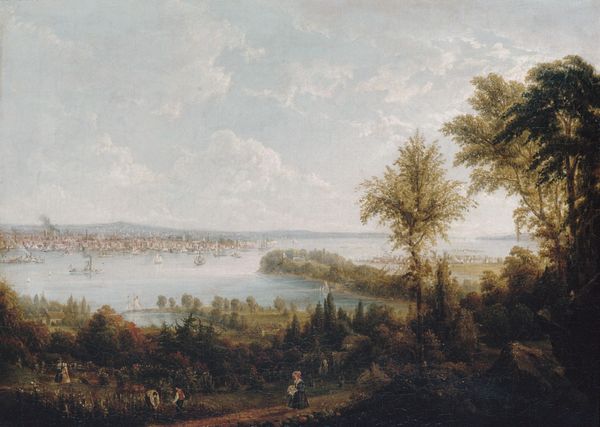
Copyright: Public domain
Curator: Today, we’re observing Vasily Polenov's "Oka Valley," an oil on canvas painting from 1902. Editor: It has this feeling, almost a premonition, of an ending, a long exhalation as the vibrant autumn colors yield to the cool, reflective river. It's somber. Curator: Interesting. The composition directs the eye along the snaking river, its course rendered with smooth, horizontal brushstrokes contrasting the textured foliage. Consider how the artist utilizes a high vantage point to compress depth, almost flattening the perspective. Editor: The winding river is a classical symbol, the journey of life itself—and it also reminds me of Russian folklore and the vastness and complexity of the natural world. Curator: Indeed. We can analyze how Polenov’s work aligns with the Impressionist movement's departure from academic painting; its stylistic nuances lie in its ability to capture the ephemeral play of light and atmosphere. There is a looseness that marks this. Editor: Those warm hues resonate culturally—a longing for home, a sense of national identity rooted in nature, amplified with symbols and allegories. Rivers possess the symbolic strength to be a powerful message. Curator: And if you look, Polenov cleverly used complementary colors: the oranges and reds of the autumnal trees create contrast next to the blues of the Oka, therefore enhancing their luminosity and contributing to the artwork's depth. Editor: That juxtaposition underscores the emotional undercurrent – a life-giving, enduring waterway set against the blaze of a fading season. Very moving. Curator: Precisely. "Oka Valley," a successful painting in that Polenov presents the motif of nature, capturing a fleeting moment with the most expressive techniques. Editor: Seeing the visual narrative now – thanks! I’m left considering its implications for our collective memory of place and identity.
Comments
No comments
Be the first to comment and join the conversation on the ultimate creative platform.
